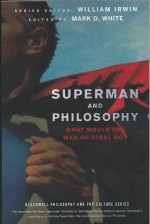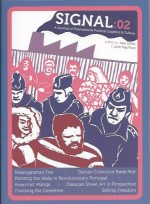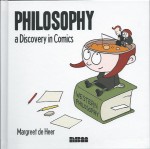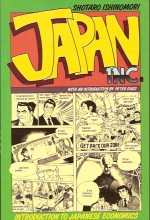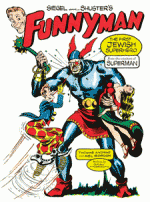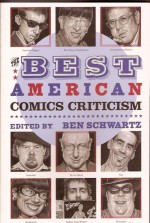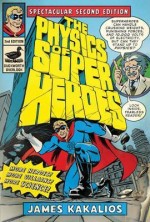
By James Kakalios (Duckworth Overlook)
ISBN: 978-0-71563-911-5
I grew up in the 1960s reading a lot of comics – as well as books, papers, bubble gum cards, magazines, cereal packs and sweet wrappers. With so few other distractions, the printed word – with or without attendant illustrations – held a magic no other medium could match, no matter how much my oversized nostalgia glands tell me I still need Space Patrol, Twizzle or Champion the Wonder Horse in my rapidly decelerating life…
One thing my parents and the nuns at primary school noticed – apart from ink-stained fingers – was that I always seemed to have a fount of scientific snippets at my beck and call. That’s clearly the same experience physics professor and author James Kakalios recalls – except perhaps the nuns and Twizzle parts.
As explained in his Foreword and Preface, Silver Age comicbooks – especially those published by National/DC – were honeycombed with scientific and historical features and anecdotes whilst the stories, mostly written by jobbing pulp science fiction writers like John Broome, Gardner Fox, Alfred Bester, Edmond Hamilton, Otto Binder and others, all emphasised a world of physical rationalism – albeit one loaded with aliens, mutants, monsters and flying guys in capes and perpetually suspended disbelief…
Thus our topic for today is the splendid second edition of his oddly captivating text using extracts from comicbooks to highlight and explain the basic principles of how reality works. Sadly he also tells us where – and exactly why – superpowers and Fights ‘n’ Tights shenanigans are strictly hot air, wishful thinking and pure Balonium…
Working from a genuinely funny script (remember when teachers were allowed to be funny in class?) and utilising forthright and not at all forced comparisons, examples and illustrations, Kakalios translates his copious knowledge of comics continuity to detail everything you – and most importantly your kids – need to know. It begins, following a Foreword by Lawrence M. Krauss and brace of Prefaces (to the First and Second Editions), with Introduction: Secret Origins: How Science Saved Superhero Comic Books recounting the most important facts of all: how comics were created and evolved…
After that it’s a spectacularly engaging tumble through the discipline (each with an appropriate – and suitably summarised – comics event whether your background and major is primarily Science or Costumed Drama) beginning with Section 1 and all you need to understand about Mechanics…
Subsection 1. Up, Up and Away: Forces and Motion features Superman, whilst 2. Deconstructing Krypton: Newton’s Law of Gravity moves off-planet to glean the truth about his vaporised home before 3. The Day Gwen Stacy Died: Impulse and Momentum at last explains Spider-Man’s big mistake on that tragic night.
Running up walls and across water gets a thumbs-up in 4. Flash Facts: Friction, Drag and Sound, Ant-Man‘s shrinking comes under a microscope in 5. If This Be My Density: Properties of Matter and 6. So He Talks to Fishes. Want to Make Something of It?: Fluid Mechanics considers Aquaman and Sub-Mariner‘s surprisingly difficult trick of breathing underwater as well the pressures of the job…
Although he makes it look easy, 7. Can He Swing from a Thread?: Centripetal Acceleration examines the forces in play when Spidey goes web-wandering whilst 8. Can Ant-Man Punch his way Out of a Paper Bag?: Torque and Rotation handles the problems of sustained strength and diminished height as well as how Spidey can jump so far whereas 9. The Human Top Goes Out for a Spin: Angular Momentum reveals why Whirlwind and the Top should be the most powerful bad guys in town…
10. Is Ant-Man Deaf, Dumb and Blind?: Simple Harmonic Motion covers how a host of shrinking super-folk could communicate with the larger world after which 11. Like a Flash of Lightning: Special Relativity wraps up the easy stuff with a round-up of the Scarlet Speedsters top tricks…
Section 2 – Energy – Heat and Light concentrates on scalar physical quantities (look at me showing off!) with 12. The Central City Diet Plan: Conservation of Energy as the sources of Flash’s vivid vitality are divined, whilst Ant-Man and the Atom are thoroughly quizzed on 13. The Case of the Missing Work: The Three Laws of Thermodynamics before Iceman and Storm are drafted in to discuss 14. Mutant Meteorology: Conduction and Convection.
15. How the Monstrous Menace of the Mysterious Melter Makes Dinner Preparation a Breeze: Phase Transitions is a quick briefing on how materials can be made to change states, after which the most visually iconic powers in comics are called up for 16. Electro’s Clinging Way’s: Electrostatics, 17. Superman Schools Spider-Man: Electrical Currents, 18. How Electro becomes Magneto when he Runs: Ampere’s Law, 19. How Magneto becomes Electro when he Runs: Magnetism and Faraday’s Law and 20. Electro and Magneto do the Wave: Electromagnetism and Light
The lesson endeth by bringing us cosmologically up-to-date with Section 3 РModern Physics and the inevitable team-up of Doctor Doom and Max Planck for 21. Journey into the Microverse: Atomic Physics, whilst Erwin Schr̦dinger does or does not lend his weight to theories of parallel Earths and time travel in 22. Not a Dream! Not a Hoax! Not an Imaginary Tale!: Quantum Mechanics, before Kitty Pride and the Golden Age Flash go through a helpful phase in 23. Through a Wall Lightly: Tunneling Phenomena.
It only remains to take a look at the stuff we build – and build with – in 24. Sock it to Shellhead: Solid-State Physics and 25. The Costumes are Super, Too: Materials Science to bring this foundation course in physically measurable existence to a satisfactory conclusion…
Nonetheless education never ends and Section 4 – What Have We Learned? brings us what we’ve all really been waiting for in 26. Me Am Bizarro!: Superhero Bloopers. This is where you can find out if the things you think of as the daftest in comics can be compared to what an accredited thinkologist can prove, and I’m personally pleased to find that two of my all-time “yeah, buts…†and “oh, come ons…†have at last been countersigned by an expert. Of course there were a whole bunch more that I missed…
Kakalios winningly wraps up his delicious brain-expanding exercise with the Afterword: Lo, There Shall Be An Ending! but can’t resist giving further opportunities to get smarter and more rounded with Recommended Reading – happily that’s a list of great comics as well as key texts – and, just like hair product commercials there’s even a genuine “science bit†as Key Equations list the fundamental magic formulas you need to conquer the world or pass a test. There’s even a section of Notes, Acknowledgements and an Index to make this seem more like a proper book but they can’t diminish the glee and wonderment one iota…
Filled with penetrating insights and explanations of how this universe really works with illustrations from a pantheon of America’s greatest comics-makers (yes, there is a little bit of maths – but not enough to trouble even a bright 7-year old) this a brilliantly accessible tome no comics-loving kid should be without. Tell them teacher said so.
© 2009 James Kakalios. All rights reserved.

